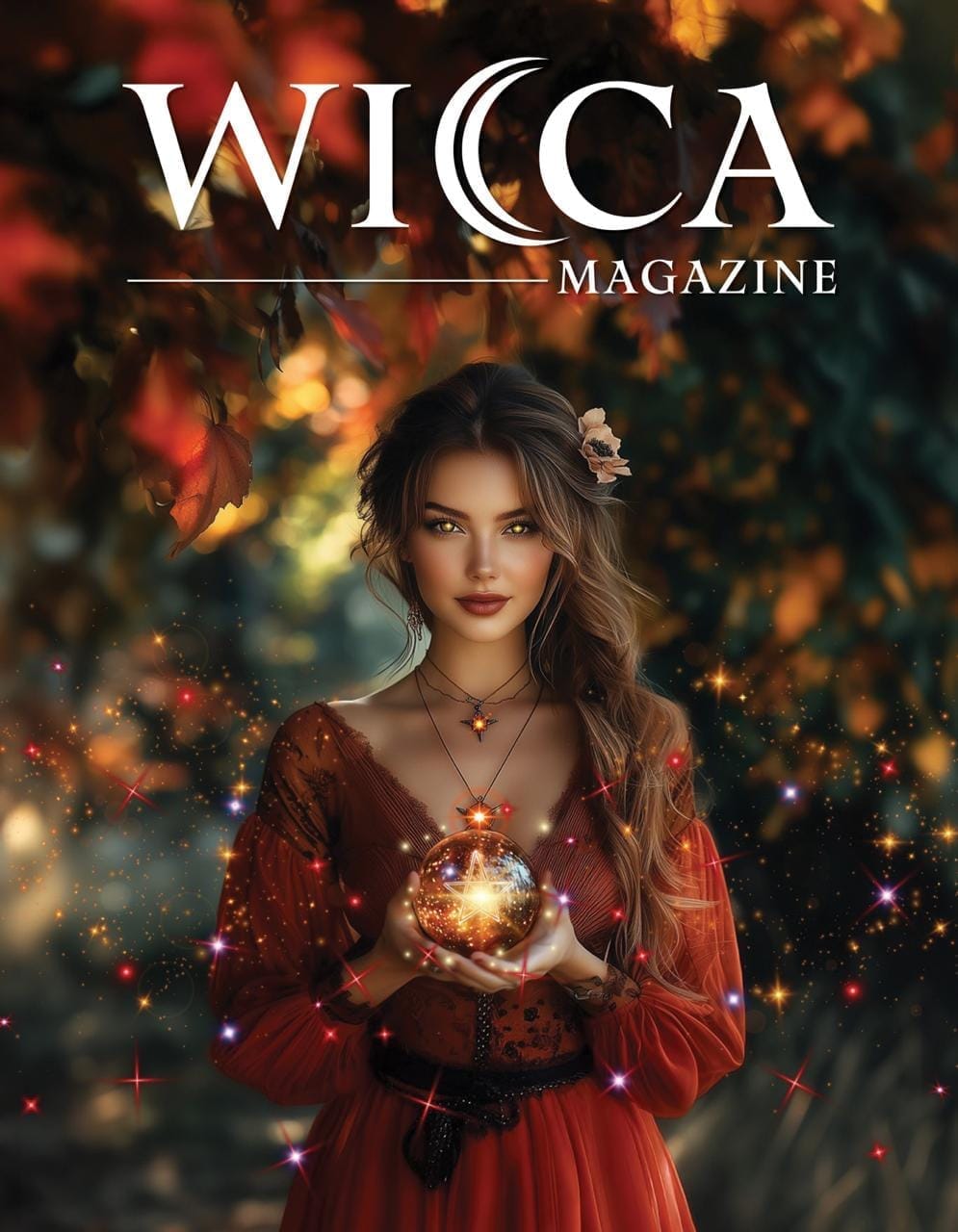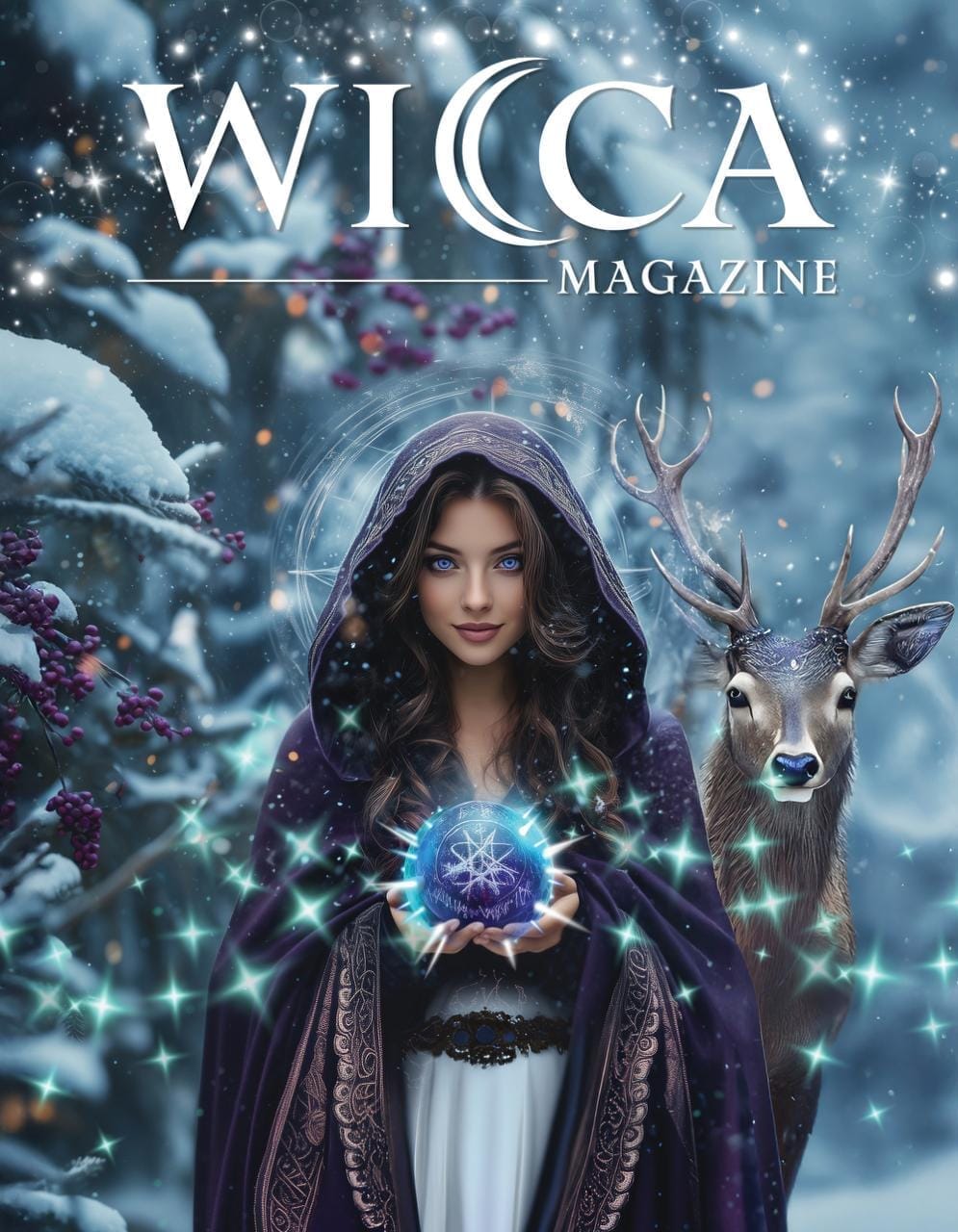


Unlock the Magick of Yule! - Your Wicca Magazine Issue Awaits
Step into the season of light with Wicca Magazine. Each digital issue is a sacred offering of spells, rituals, and Wiccan wisdom — honoring ancient paths and empowering your modern magick. Your craft, your journey, your magickal sanctuary.
Ravens are fascinating birds, not only mythically but also in their evolution.
Widely distributed across the northern hemisphere, it’s believed ravens originated in prehistoric Europe and crossed into what later became North America some two million years ago.
Another interesting fact is that although all ravens look pretty much the same, there are about eight species globally. While they’re all superficially large, pitch black birds, genetically, they vary substantially.
Throughout time, ravens have attracted both the admiration and fear of humankind. They feature prominently in myths, folklore, and culture.
Let’s take a closer look.
Raven Particulars
Adult ravens are fairly heavy birds weighing in at around 2.6 lb or 1.2 kg. Males and females look much the same, only males being a bit bigger.
Flocks of ravens are comprised of juveniles. When they mature, they form monogamous pairs and stake out territory they defend courageously. They’re very protective of their eggs and chicks but don’t hesitate to raid the nests of other bird species.
Their lifespan in the wild is around twenty years, which is quite long and one of the reasons they became habituated to living side by side with people. They were attracted to human settlements by food and nesting opportunities. Their lifespan means they have become accustomed to human habits and lifestyles. Being omnivorous, crops, livestock, and scraps of food provided a ready food source.
Ravens feed on anything from seeds to fruit, insects, amphibians, small reptiles, animal feces, human food scraps, and carrion.
They’re highly intelligent birds that can be taught to talk—an attribute that earned them the reputation of both wisdom and trickery in certain cultures.
Ravens also form symbiotic relationships with other species such as predatory mammals and birds. For instance, they’re known to call wolves to big mammal carcasses. Raven logic? Wolves tear carcasses open, which they can’t do. Once opened, the ravens can feed more easily.
It’s likely for this same reason that ravens were associated with ancient blood-soaked battlefields, which was where they earned the dark reputation of evil and death among some cultures.
Ravens in Mythology
In Greek mythology, the raven is associated with Apollo, the god of prophecies. They were seen as the gods’ messengers to mortals and were usually a sign of bad luck.
Apollo suspected his lover, Coronis, of being unfaithful, so he sent a white raven to spy on him. When the raven confirmed his suspicions, Apollo became enraged and scorched the messenger. The raven’s feathers were burnt black, and they stayed that way to this day.
In early Christian mythology, martyr Saint Vincent of Saragossa’s body was protected by a flock of ravens after his execution. They only left his body when his followers arrived to claim it. His loved ones erected a grave shrine in St Vincent’s honor, and the ravens continued to guard it.
When the king of Portugal exhumed the saint’s body for reburial in Lisbon in 1173, he instructed the ravens to come along. Today the raven still has pride of place on Lisbon’s coat of arms.
Also, in Christianity and Judaism, ravens were the first creatures to be released from the ark by Noah. Ravens are referred to as a symbol of God’s provision in both religions as well. That said, early biblical cleric, Philo of Alexandria, interpreted the raven as representing vice as opposed to the dove that represents peace.
Hindu mythology positions the raven as ancestors of all Hindus. Consequently, they’re still honored with offers of food during Śrāddha.
Hindu myth tells of an ancient sage, Bhusunda, who took on the form of a raven. He was an enlightened, peaceful soul born of a goddess. He perched on a wish-filling tree from where he would recount bygone times in Hindu cosmology.
Shani is a Hindu deity that brings evil and retribution and protects belongings and property. She’s frequently depicted sitting on a raven. Hindus pray to Shani to ward off bad luck and remove obstacles.
Dhumavati is the widow Hindu goddess of strife and gloom. Like Shani, she is portrayed riding a raven or a horseless chariot emblazoned with a raven emblem.
Siberia’s indigenous people have a raven god named Kutcha, who plays a prominent role in local shamanic traditions.
Native American mythology views the raven as the creator of the word and a bit of a con.
These two traits can be presented as two individual characters or one. The raven creator made the world and brought light and darkness to life. On the flip side, the other character is immature, conniving, greedy, sly, and selfish.
In medieval Europe, ravens were considered bad omens. This was likely due to ravens feeding on carrion and being wholly black in color. Death, sorrow, and evil were usually attached to them. In Sweden, they were believed to be the ghosts of murder victims who had no proper burial, whereas Germans of the time thought them to be souls of the damned.
In the British Isles, the Irish goddess, Morrígan took on the form of a raven after the death of the hero Cú Chulainn. The Welsh gigantic god Bran the Blessed, son of the sea god Llyr, was named after the raven and used it as his symbol.
To Conclude
These are only a few examples of the importance people have attached to ravens over the centuries.
As you can see, they’ve been both admired, loved, and feared.
Many today still associate ravens with misfortune and death. Others believe they’re the connection between life and death or can communicate with the world of the dead.
However you choose to view these captivating birds, they’ve been part of human evolution for millennia and deserve our respect.